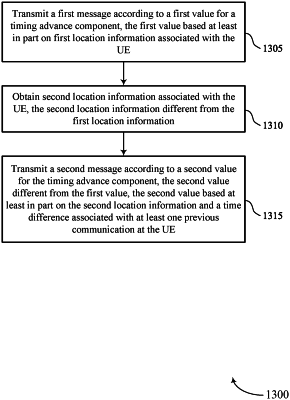| CPC H04W 56/005 (2013.01) [H04W 56/006 (2013.01)] | 27 Claims |

|
1. An apparatus for wireless communication at a user equipment (UE), comprising:
one or more memories; and
one or more processors coupled with the one or more memories and configured to cause the UE to:
transmit a first message according to a first value for a timing advance component, the first value based at least in part on first location information associated with the UE;
obtain second location information associated with the UE, the second location information different from the first location information; and
transmit a second message according to a second value for the timing advance component, the second value different from the first value, the second value based at least in part on the second location information and a time difference associated with at least one previous communication at the UE.
|